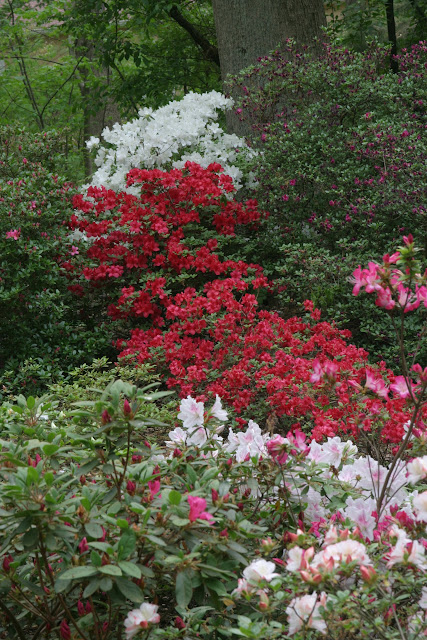Critters
Most come by night, whereas I'm diurnal. We sometimes
meet in that middle ground of dusk, as the Martians and the humans
did in Ray Bradbury's “Martian Chronicles”.
The back third of my suburban half-acre is kept as a
small, wild woodland, to grow as it pleases. Except when it
displeases me (think Poison Ivy). Mainly it belongs to the wild.
Except for the giant mulch pile. Otherwise it's wild. Except for
the pile of old pots. Of course, the woodland's really for the
seedlings growing there by chance. Except for a small dumping ground
of mixed and unmixed dirt. Otherwise the critters have the place to
themselves.
My son and I used to lie on the windshield of our car
and watch the bats at dusk. Now, with white-nose fungus they've
become rare, and my son is grown and living in another state.
Once a Barred Owl flew in through the dusk and perched
a little above me. But I was too big to eat and wouldn't have been
tasty, so he flew off. As big as they are they're absolutely silent.
It's lucky that I was looking in the direction he came from.
Turning over a part of my mulch pile one afternoon, I
glanced sideways and noticed a raccoon lying on top of a chain link
fence about 10 yards away, head on its paws, watching me intently. I
imagined him quoting the common joke: “Work fascinates me. I can
sit and watch it for hours.” I might have been making it easier
for him to dig into the pile and find a mouse nest, but that would be
later when I would retreat for dinner.
Possums wander through, but I don't see them as often
as the raccoons. The possums scurry through the leaf litter and
always seem to wish that they were somewhere else.
Foxes
run through, quickly and intently, always appearing to be late for
something. Once, however, a mother and her 2 kits enjoyed a sunny
morning chasing each other around the lawn near the picture window.
I got a few quick photos, but they refused to pose. Also, despite my
desires, sometimes an azalea would be in their way, so it simply had
to be bowled over. I think that I once had that kind of energy but
it's getting harder to remember.
Years ago rabbits munched some Satsuki azaleas and I
was irritated. But the rabbits which have come by the lawn in the
last 2 summers have become the perfect guests. They eat only the
weeds: plantain and clover, ignoring the hosta and heuchera. I
sampled those items myself and can see why they made those choices.
Maybe some other gardener trained them. A bunny-whisperer?
The field mice in the leaf litter don't seem interested
in munching the azaleas so we rarely interact; until they get into
the shed in the winter. But that's a story for another time.
Squirrels are the children of the yard. Diurnal.
Hated and loved. They dig up small plants and leave them for dead
(looking for the acorns buried the previous fall). One small plant
lost its left half to a deranged squirrel that insisted on repeatedly
doing back flips off its low branch until it broke (the branch
unfortunately, not the squirrel). One never thinks of animals as
being psycho, just people. Animals are supposed to be noble and do
natural things. The French writer Rousseau celebrated naturalism in
people and animals, but he didn't live to meet my squirrels.
However, when their faint echoes of humanity have me focused at the
window, time isn't passing.
The garden is so much more than the azaleas that bloom
in the spring. It is alive with bees, butterflies, ants, katydids,
praying mantis' and dragonflies. I can spend the whole day there!
Oh, and did I tell you about all the birds? Well, there's this
irritating Red-bellied Woodpecker ...










